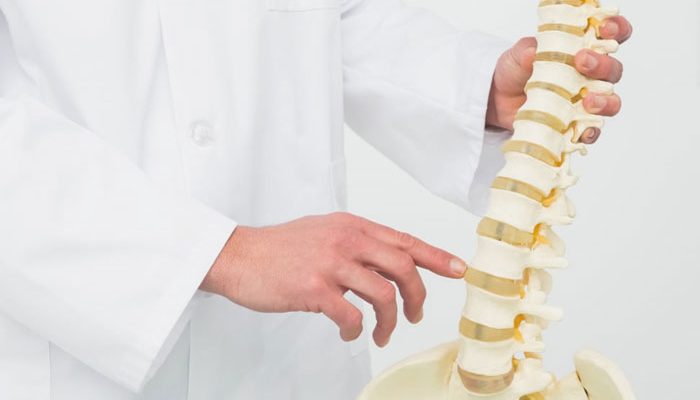A human spine is made up of vertebrae that are stacked up on top of each other. If we view from a person’s backside, we should see the spine running down the middle of the back. When this does not happen, abnormal curvatures of the spine may be present. Mostly commonly, these abnormalities are diagnosed as Kyphosis, Lordosis, or Scoliosis.
Kyphosis
Some rounding of the back is normal, but when a person is diagnosed with kyphosis, they have an exaggerated rounding of the back. Having kyphosis leads to a “hunchback” or severely slouched posture. Although kyphosis can technically affect any person at any age, older women are most likely to suffer from this condition.
While mild cases of kyphosis may produce no pain or any noticeable symptoms at all, others suffering from this condition report body image problems, back pain, stiffness, and even a reduced appetite. While kyphosis could simply be caused by slouching, which is caused postural kyphosis, other conditions that could contribute to having kyphosis include, but are not limited to, birth defects, cancer and cancer treatments, disk degeneration, Marfan Syndrome, Prader-Willi disease, osteoporosis, and Scheuermann’s Disease.
The treatment for kyphosis will depend on the cause of your condition, as well as the symptoms that you are experiencing. Medications, such as pain relievers and osteoporosis drugs, may be prescribed to help those suffering. Another conservative treatment option is physical therapy. When these options are not effective and when the kyphosis curvature is severe, surgery may be the best option. In cases where the kyphosis curve is pinching the spinal cord or nerve roots, surgery may be required in order to prevent serious health consequences.
Lordosis
In order to naturally position our heads over our pelvis, our spine has some normal curves that occur at our neck, torso, and around the lower back. Lordosis, also known as “swayback,” occurs when the spine curves too far inward. Lordosis is most commonly found at the lower back.
Lordosis can affect people of any age. The pain from lordosis can sometimes be so severe that it even affects the ability to move. Certain conditions, such as obesity, osteoporosis, kyphosis, spondylolisthesis, achondroplasia, and discitis can also contribute to a person having lordosis.
There are many conservative treatment options available for those diagnosed with lordosis. These may include simple lifestyle modifications such as reducing excess body weight and beginning physical therapy exercises. Drugs may also be prescribed to reduce pain and swelling. In children and adolescents diagnosed with lordosis, braces may be used to control the curve’s growth. When conservative treatments are not effective and the lordosis curvature is causing pain and other symptoms, having spine surgery may be the best treatment option for the patient.
Curvatures of the spine can cause very serious health consequences and become worse if not properly treated. If you suspect that you or someone you love may have a spinal curvature, it is important to be evaluated by one of our spine specialists at the Stridewell Clinic! Stridewell Tips
Scoliosis
A person diagnosed with scoliosis has a sideways shaped curve to their spine. Often times, the sideways shape may resemble the letter ‘C’ or ‘S.’ Scoliosis is most commonly diagnosed in children during the growth spurt that occurs just before puberty. We do not know the cause of most cases of scoliosis.
When a child is diagnosed with scoliosis, they are monitored closely using X-Rays to ensure that the curvature does not get worse. For many children who have been diagnosed with scoliosis, no treatment of any kind will be necessary. For other children, it may be necessary to wear a brace to prevent the curve from getting worse. Surgery is needed only in severe cases of scoliosis.
Symptoms of scoliosis include an uneven waist, having one hip that is higher than the other, uneven shoulders, and/or having one shoulder blade that “sticks out” more than the other. Some cases of scoliosis in children appear very gradually and cause no pain. Due to the gradual onset, the child and even their parents may not even notice the condition. Instead, the scoliosis is often times discovered during a screening or by someone outside of the home who frequently works with children, such as a teacher or coach.
read article


